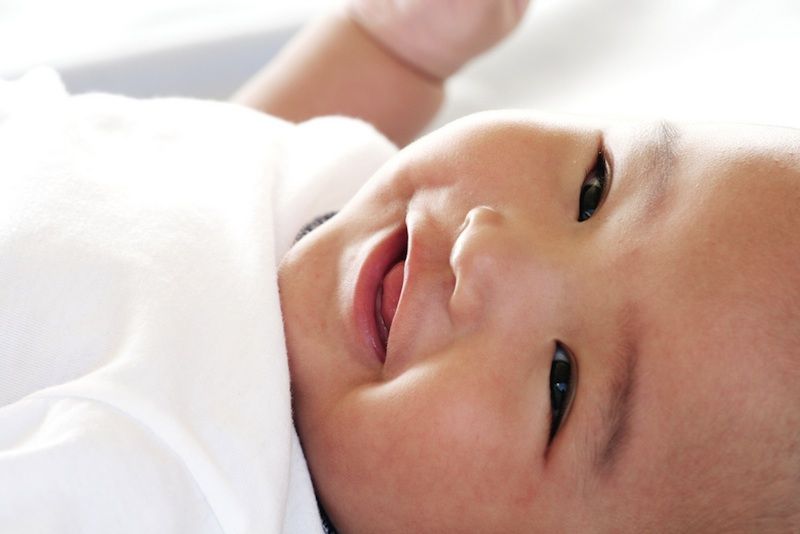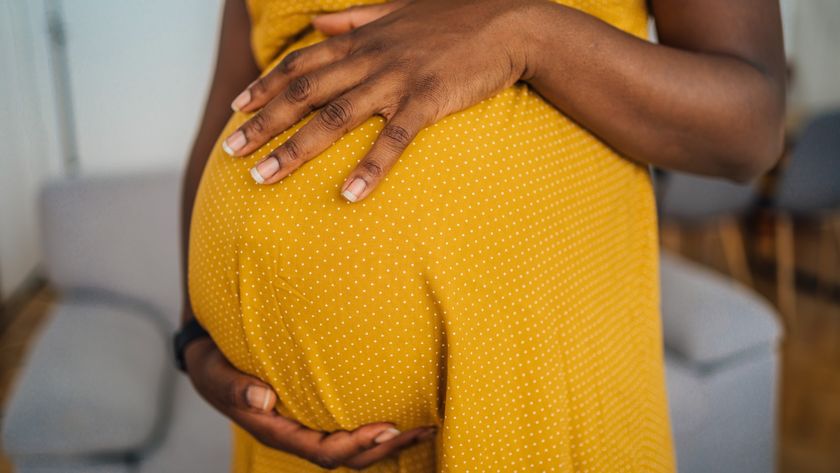Hard Times Mean Fewer Baby Boys, Study Suggests

Pregnant women are more likely to hear "It's a girl!" when giving birth during famine conditions than when times are flush, according to a new study of the 1959-1961 Great Leap Forward famine in China.
The study reveals a dip in the ratio of boys born per girl during the famine years in the country, Shige Song, a demographer and sociologist at Queens College of the City University of New York, reports today (March 27) in the journal Proceedings of the Royal Society B. It's not entirely clear what causes this dip, but evolutionary theory suggests that baby boys may be a genetic gamble for parents, and thus not the best bet when times are lean.
"Investment on male children is a high-risk, high-return game, so you want to do it only if you are in very good situation," Song told LiveScience.
Boys and girls
This theory has been around since the 1970s. Males can father lots of offspring, Song explained, so a successful male child has a good chance of passing on genes. But when males fail to mate, they tend to do so spectacularly — a non-dominant lion in a pride ruled by alpha male is pretty unlikely to get a chance to pass on his genes even once, Song said.
"In the evolutionary sense, the parental investment on these male lions would be wasted," he said. [5 Myths About the Male Body]
Female offspring are the slow-and-steady bet. They'll likely produce a few offspring no matter what, but they don't have the fecundity of males. That makes them, theoretically, a safer but less lucrative bet for the passing on of genes, Song said.
Sign up for the Live Science daily newsletter now
Get the world’s most fascinating discoveries delivered straight to your inbox.
"In good conditions, invest in sons; in poor conditions, invest in daughters," he said. "The evolutionary argument goes that anybody who can do this survives, anybody who cannot, they go away."
Sex-ratio changes have been seen in animals, including bison, which have more male offspring when it rains and food is plentiful. The question, then, is: Does sex ratio change in humans in response to the outside environment? On average across the globe, 106 boys are born for every 100 girls (boys are slightly less likely to survive after birth, evening out the gender ratio). But what's less understood is why this gender ratio occurs and if it can ever change, Song said.
Famine and fertility
To find out, Song used data from a 1982 survey by the Chinese State Family Planning Commission. The survey, which was nationally representative, queried one out of every 1,000 women in the country about their birth histories. There were a total of 310,101 interviews with Chinese women ages 15 to 67.
By tracing the history of these women's reproductive health, Song was able to capture a critical moment in Chinese history: the Great Leap Forward, an effort by the Chinese Communist Party to rapidly collectivize and industrialize the country. The result was a terrible famine that killed tens of millions of people.
Because the famine affected every walk of Chinese society, it created a "natural experiment" on what happens when a population is suddenly deprived of nutrition, Song said.
The results showed a vivid pattern. Sex ratio very gradually declined — meaning fewer boys per girl — between 1929, which was as far back as the study's history reached, and 1960. In April 1961, about two and a half years after the famine started to take hold, the decline takes a dramatic turn. In April 1960, there were 108.9 boys born per every 100 girls, Song said. By 1963, steady turned into a dive and there were only 104.3 boys born for every 100 girls.
As the famine began to ease in 1963, so, too, did the sex-ratio decline. By 1965, the sex ratio had shot up to 107.6, almost pre-famine levels. The increase then continued gradually into 1980.
The survey asked women about the sex of babies born and took place largely before ultrasound technology made sex-selective abortion possible in China, so the changes are unlikely to be intentionally man-made, Song reported.
One mystery that remains is what drives these changes. It's possible that fewer Y-chromosome-carrying sperm manage to fertilize eggs when nutritional conditions are bad, Song said, meaning that there is selective fertilization for females. (Sperm can carry either an X chromosome, which creates a female fetus when it merges with X-carrying eggs, or a Y chromosome, which results in an XY, or male, fetus.) Alternatively, male embryos may be more prone to miscarriage during famine, meaning fertilization stays the same but live births drop.
Other studies have looked at famine-induced sex ratio changes and found mixed results, but those famines tended to be short-lived and geographically limited, such as the Dutch Hunger Winter of 1944-1945, which lasted several months, and the Siege of Leningrad in 1941, which lasted a couple of years.
Now that the pattern of sex-ratio changes is established in the Chinese famine, Song plans to dig deeper into the causes.
"I'm going to go ahead and look at regional variation, variation based on birth order, then the relationship between sex ratio at birth and fetal loss and other things," he said. There will be some more, and hopefully more interesting, results coming out from this."
You can follow LiveScience senior writer Stephanie Pappas on Twitter @sipappas. Follow LiveScience for the latest in science news and discoveries on Twitter @livescience and on Facebook.

Stephanie Pappas is a contributing writer for Live Science, covering topics ranging from geoscience to archaeology to the human brain and behavior. She was previously a senior writer for Live Science but is now a freelancer based in Denver, Colorado, and regularly contributes to Scientific American and The Monitor, the monthly magazine of the American Psychological Association. Stephanie received a bachelor's degree in psychology from the University of South Carolina and a graduate certificate in science communication from the University of California, Santa Cruz.
Most Popular




